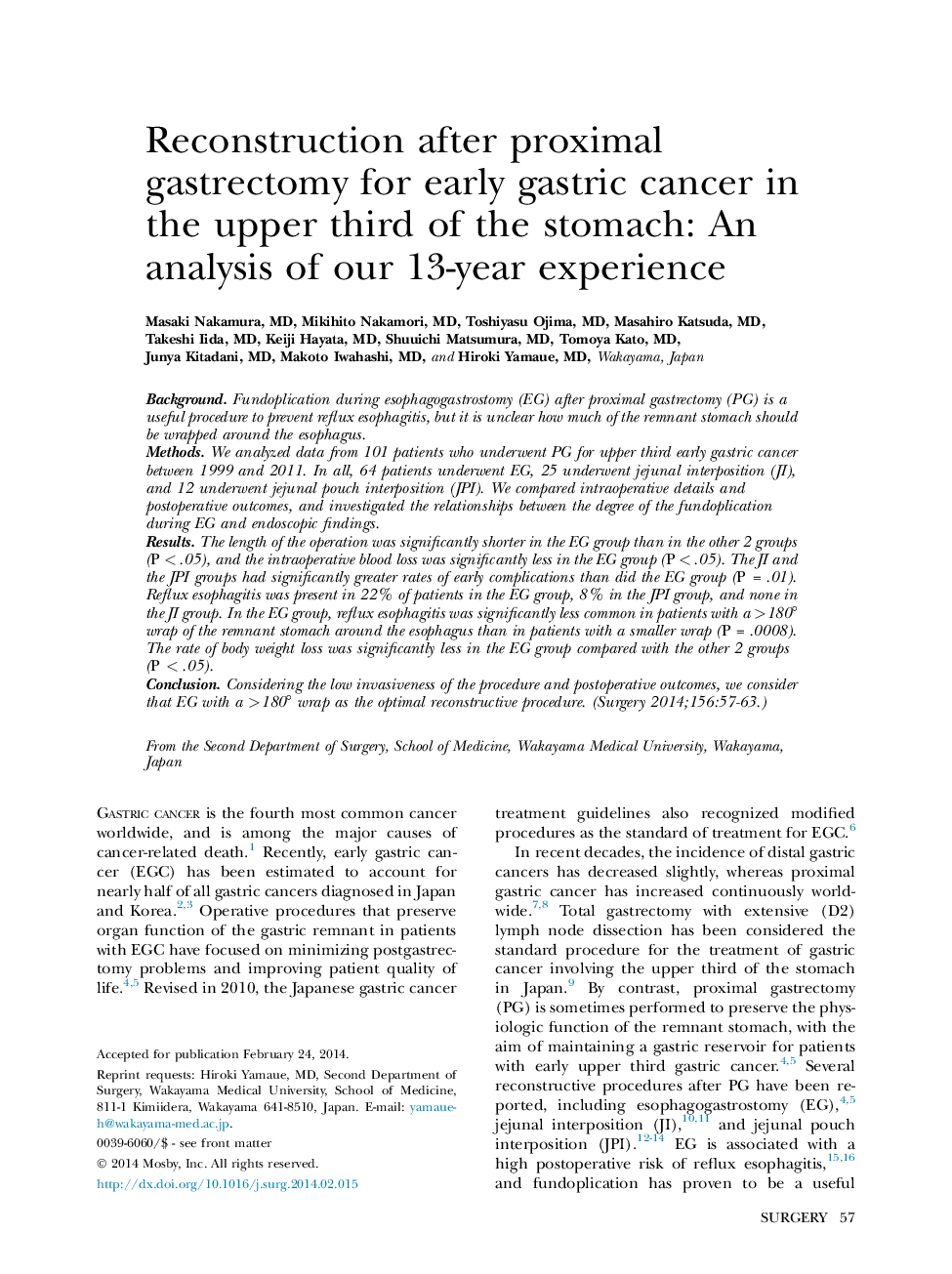| Article ID | Journal | Published Year | Pages | File Type |
|---|---|---|---|---|
| 4307946 | Surgery | 2014 | 7 Pages |
BackgroundFundoplication during esophagogastrostomy (EG) after proximal gastrectomy (PG) is a useful procedure to prevent reflux esophagitis, but it is unclear how much of the remnant stomach should be wrapped around the esophagus.MethodsWe analyzed data from 101 patients who underwent PG for upper third early gastric cancer between 1999 and 2011. In all, 64 patients underwent EG, 25 underwent jejunal interposition (JI), and 12 underwent jejunal pouch interposition (JPI). We compared intraoperative details and postoperative outcomes, and investigated the relationships between the degree of the fundoplication during EG and endoscopic findings.ResultsThe length of the operation was significantly shorter in the EG group than in the other 2 groups (P < .05), and the intraoperative blood loss was significantly less in the EG group (P < .05). The JI and the JPI groups had significantly greater rates of early complications than did the EG group (P = .01). Reflux esophagitis was present in 22% of patients in the EG group, 8% in the JPI group, and none in the JI group. In the EG group, reflux esophagitis was significantly less common in patients with a >180° wrap of the remnant stomach around the esophagus than in patients with a smaller wrap (P = .0008). The rate of body weight loss was significantly less in the EG group compared with the other 2 groups (P < .05).ConclusionConsidering the low invasiveness of the procedure and postoperative outcomes, we consider that EG with a >180° wrap as the optimal reconstructive procedure.
